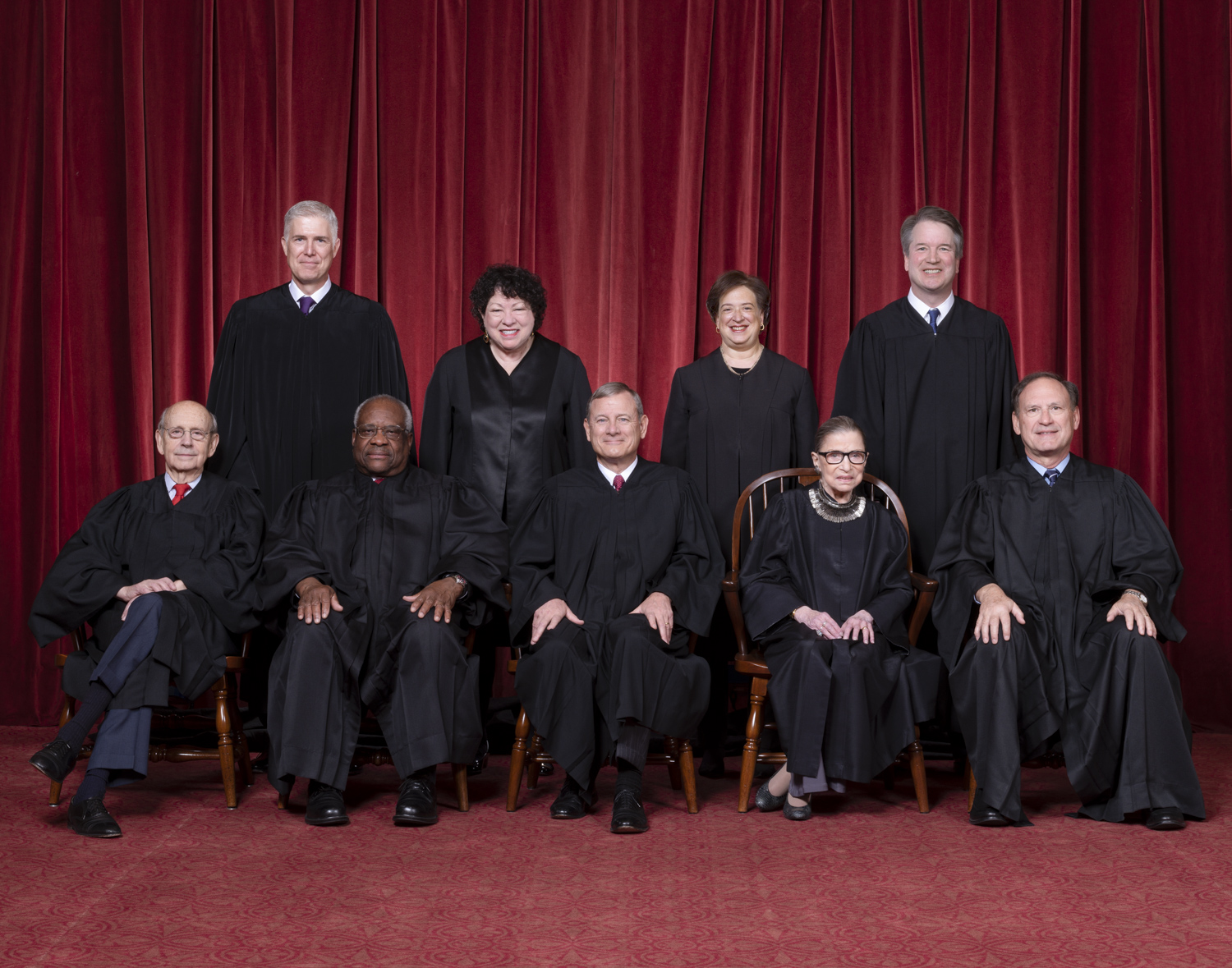The Filet or the Flounder? The Ritz or the Radisson?
According to their financial disclosures, the justices were lavished with dozens of trips in 2018, yet there’s no way of knowing how lavish they were
 Supreme Court justices took 64 trips last year for which they received third-party reimbursements, according to their annual financial disclosure reports released this afternoon.
Supreme Court justices took 64 trips last year for which they received third-party reimbursements, according to their annual financial disclosure reports released this afternoon.
Justice Clarence Thomas spoke at the University Club in New York and was reimbursed for “transportation, meals and lodging.” Justice Ruth Bader Ginsburg’s trip to Petra was paid for by a man given no description in her report. Justice Stephen Breyer traveled to Canada, France, Ireland, Spain and Sun Valley, as he often does. And Justice Samuel Alito simply noted he was attending “conferences” while in Italy and Switzerland.
Though not indicated directly on the reports, it is assumed that the reimbursements for these jaunts was each greater than $390, the statutory reporting trigger, but that’s all the public knows, since the justices are permitted to omit reimbursement amounts from their reports.
“Once again, the justices took dozens of trips across the country and around the world last year in which a third party paid for their dining, airfare and accommodations, with the public left in the dark about how lavish these trips may have been,” FTC executive director Gabe Roth said. “Just as top officials in other branches are required to list the market value of their food, flights and hotels when they travel on someone else’s dime, the justices should have a similar requirement, so that the public can better determine whether an outside source is attempting to buy influence.”
FTC gets results:
Today’s reports also show that Chief Justice John Roberts sold up to $250,000 in AT&T shares on Nov. 15, 2018, just eight days after FTC discovered that he possibly voted on an AT&T petition in violation of the federal recusal statute. (UPDATE: It’s also possible the sale was triggered by a net neutrality case that reached SCOTUS on Nov. 5 via the D.C. Circuit.)
Cert. was denied for the case in question, 17-1287, Marcus Roberts et al. v. AT&T Mobility, on June 18, 2018, four days after the merger between that company and Time Warner, whose shares Roberts have held for more than a decade. Even if the justices’ conference took place the same day as the merger (June 14), which is possible, FTC believes a recusal was warranted.
All told, the three justices who for the last dozen years have been the only ones on the court to own individual stocks – Roberts, Breyer and Alito – shed up to $345,000 from their portfolios in 2018, with Breyer selling his common and preferred shares in Applied Analysis in December and Alito selling his Merck shares in October in order to sit on a case.
“It should not take a mistake, or near-mistake, to convince a justice that he should not hold shares in a company that frequently comes before the court,” Roth said. “Such holdings often lead to recusals, meaning the potential for a 4-4 tie, which undermines the judiciary’s ability to function properly. Though they’re trending in the right direction, selling their shares bit by bit, Roberts, Breyer and Alito should more directly follow the lead of their other colleagues and refrain from owning these shares.”
In 2017, Roberts, Breyer and Alito sold up to $360,000 from their portfolios. All told, the three owned shares in 40 companies at the end of the 2018, compared to 44 companies at the end of 2017, compared to 50 companies at the end of 2016, 57 companies at the end of 2015 and 73 companies at the end of the 2014.
The companies they owned as of Dec. 31, 2018, are:
– Roberts (5 cos.): Lam Research, Sirius XM, Texas Instruments, Thermo Fisher Scientific, Charter Communications
– Breyer (8 cos.): ADP, Cintas, Fastenal, Lowe’s, Paccar, Pearson, Sysco, UTC
– Alito (27 cos.): 3M, Abbott Labs, Abbvie, AES, Becton Dickinson, BHP Biliton, Black Hills, Boeing, Caterpillar, CDK Global, ConocoPhillips, DowDuPont, Fortis, Jacobs Engineering, Johnson & Johnson, L’Occitane Luxembourg, MolsonCoors, Mondelez, OGE Energy, Oracle, Parker Hannifin, Phillips 66, PNC, Procter & Gamble, Sealed Air, TJ Maxx, UTC
A year-over-year chart of the justices’ securities since Dec. 31, 2012, can be seen here.
Other highlights:
We now know that Justice Gorsuch earned a $225,000 advance for a book out this fall, Sotomayor received $33,000 for her various works and Breyer took in a mere $4,415.69 in royalties for The Court and the World.
In addition to their various and varied investments and their quarter-million-dollar salary, several justices maintained an outside source of income. Justice Clarence Thomas earned $28,000 for teaching at the Kansas, Georgia and George Washington Law Schools; Justice Alito earned $20,250 for teaching at Duke Law School; Justice Kagan earned $17,500 for teaching at Harvard Law School; Gorsuch earned $13,250.04 for teaching at George Mason University; and Justice Kavanaugh earned $27,765 for teaching at Harvard in last January.
Today marks just the third time since the Ethics in Government Act went into effect in Oct. 1978 that the justices’ disclosures were distributed for free via thumb drives. Since its founding in Nov. 2014, FTC has urged the judiciary to digitize the reports.